Project Seagrass head to Naples for ISBW

June 14, 2024 Content Team Between the 17th and 21st June 2024, over 500 scientists, conservation professionals, and managers will converge in Naples, Italy for the 15th International Seagrass Biology Workshop (ISBW15). It will be two years since the last meeting in Annapolis, USA. The theme of ISBW15 is “Seagrasses in the Anthropocene”, centred around the fact that human activities are placing ever-increasing pressure on seagrass ecosystems at both a local and global scale. As a result of ongoing changes in environmental conditions, seagrass ecosystems have altered to an extent that has not previously been observed. The challenge currently facing the global community is the need to establish a new baseline and protect, restore, and rehabilitate the seagrass ecosystems that currently remain. Workshops Ben, Leanne and Lucy will be hosting a session on “Securing resilient and just seagrass social-ecological systems” which explores how we can manage and conserve seagrass meadows for both people and planet, with a view to showcasing how humans are an integral part of seagrass systems, shaping ecological dynamics both positively and negatively, that we can no longer ignore. Ben will also be co-hosting a workshop on the final day of the conference focused on Hypervolume modelling – a multivariate tool for seagrass ecosystem assessments. During the workshop, Ben and his colleagues will present multiple case studies using hypervolumes in seagrass ecosystems, followed by a walkthrough of the data and R code used to conduct the hypervolume analyses. Talks The Project Seagrass team will be delivering a number of talks throughout the week of the conference. Esther will discuss the threats that seagrass ecosystems across the British Isles are currently experiencing as a result of poor water quality. Within the context of an increased interest in seagrass restoration, the talk will emphasise the need to understand current threats including water quality, coastal development, and poor land use in order to conserve existing seagrass ecosystems, many of which are approaching their ecological tipping point. Ben will deliver a talk on the importance of capacity building to reduce parachute science and to fill gaps in existing knowledge of seagrass. Ben will present an approach developed through the IKI Seagrass Ecosystem Services project which sought to deliver site-specific assessments of seagrass health, and to evaluate the ecosystem services seagrass provides. As part of this project a group of six local NGOs and community groups at project sites (Indonesia, Thailand, Malaysia, Philippines and Timor-Leste) were empowered to assess seagrass with the provision of technical tools and capacity building. In her talk, Anouska will assess the role of temperate seagrass meadows (Z. Marina) in supporting fisheries and quantifying its commercial value using a Seagrass Residency Index (SRI) method. Using case study data from 7 UK seagrass meadow sites the research presents a contemporary picture of the economic value of seagrass meadows. Emma’s talk will present data from a trans-national study (Scotland, England, France, and the Netherlands) which investigated planting density and configuration in Z. noltii restoration work using core transplantation. Going forwards, the partnership will continue to assess the site-specific differences and explore effective restoration methods for Z. nolti Richard will present a talk on the interrelationship between seagrass ecosystem services. Posters Alongside the workshops and talks, members of the team will be presenting posters at the conference. Lucy’s poster will highlight the high variability in seagrass restoration success, exploring lessons learned and how learning from setbacks and successes can inform future restoration. Emily will present data from a number of separate trials examining the use of a range of substrates and additions, such as nutrients, to determine the most effective methods of growing seagrass in artificial environments. To find out more about the conference visit the International Seagrass Biology Workshop website.
Want to host the 16th International Seagrass Biology Workshop?
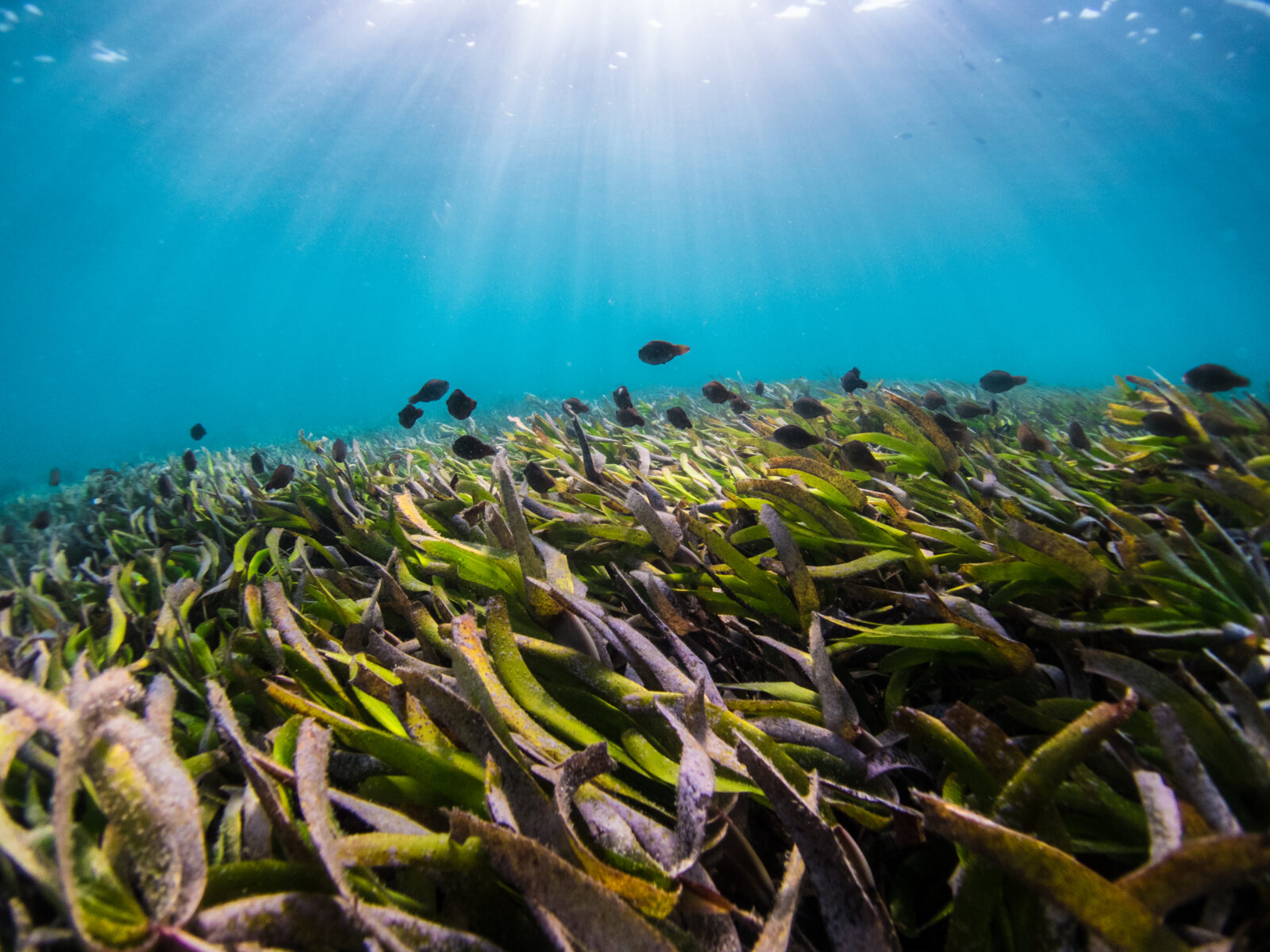
The World Seagrass Association Inc. invites expressions of interest from members and interested organisations/institutions who would like to host the 16th International Seagrass Biology Workshop (ISBW) in 2026. The International Seagrass Biology Workshop series is a meeting of research scientists, students and coastal environment managers focusing on global seagrass issues, improving seagrass knowledge, developing networks and advocating for seagrass protection/conservation. ISBWs are often 4-6 day events, made up of 2-3 days of talks (in a conference setting) and 1-2 days of workshops and often include an additional day for a field trip. Participants are generally around 100 individuals, however, this is highly dependent on the venue. The timing for ISBWs has mostly been late September, although the timing is dependent on what is most suitable for the hosting country (e.g. tides, holidays, etc). We would also like to encourage organisations/institutions in localities that have been underrepresented in past ISBWs to consider hosting this event to highlight the need for seagrass research and to expand our research networks. After the first official ISBW in 1993 it was decided that meetings were to be held at two year intervals, swapping between developed and developing nation locations. The 2024 meeting (ISBW15) will be held in Naples, Italy, from 17-21 June, in conjunction with the World Seagrass Conference (WSC2024) (https://www.isbw15.it/). Past ISBW venues include:ISBW1 (1993) Japan – KominatoISBW2 (1996) Australia – Rottnest IslandISBW3 (1998) The Philippines – Quezon City and BolinaoISBW4 (2000) France – Corsica!SBW5 (2002) Mexico – EnsenadaISBW6 (+Conference) (2004) Australia -Townsville and Magnetic islandISBW7 (2006) Africa – ZanzibarISBW8 (2008) Canada – Bamfield, Vancouver islandISBW9 (+Conference) (2010) Thailand – Phuket and Trang ProvinceISBW10 (2012) Brazil – BuziosISBW11 (2014) China – Sanya, Hainan ProvinceISBW12 (2016) United Kingdom – Nant Gwrtheyrn, WalesISBW13 (+Conference) (2018) SingaporeISBW14 (+Conference) (2022) USA – Annapolis, Maryland To read about the history of the ISBW series, seeColes, R., Short, F., Fortes, M. and Kuo, J (2014) Twenty years of seagrass networking and advancing seagrass science: The International Seagrass Biology Workshop Series. Pacific Conservation Biology 20(1): 8–16. (http://www.publish.csiro.au/nid/302/paper/PC140008.htm), andHind-Ozan, E.J., Jones, B.L., 2017. Seagrass science is growing: A report on the 12th International Seagrass Biology Workshop. Marine Pollution Bulletin.http://dx.doi.org/10.1016/j.marpolbul.2017.08.017 The International Seagrass Biology Workshop (ISBW) is an official activity of the World Seagrass Association Inc., and WSA Inc. plays a guiding role, and assists the Convener/Organising Committee when requested. Members or organisations/institutions who are interested in hosting the 16th International Seagrass Biology Workshop (ISBW) in 2026 should submit an Expression of Interest by email to Len McKenzie, Secretary, World Seagrass Association Inc., at wsa.secretary@gmail.com no later than March 01, 2024.Expressions of Interest should be no longer than 3 pages and include the following:• Name of Applicant• Applicant’s contact information including physical address and email address• Proposed Hosting Institution (add a brief description)• Country and proposed location for the event• Institutional Support• Tentative Venue Details (conference, workshop and field trips)• Preliminary Proposed Theme• Travel & Visa Considerations• Health & Safety Considerations• Diversity, Equity & Inclusivity ConsiderationsThe WSA may require more detailed information in future before a final decision. If you require additional information or any enquiries, please email wsa.secretary@gmail.com Previous Post January 15, 2024 ISBW press release updates World Seagrass Association
Want to host the 15th International Seagrass Biology Workshop?

The World Seagrass Association Inc. invites expressions of interest from members and interested organisations/institutions who would like to host the 15th International Seagrass Biology Workshop (ISBW) in 2024.The International Seagrass Biology Workshop series is a meeting of research scientists, students and coastal environment managers focusing on global seagrass issues, improving seagrass knowledge, developing networks and advocating for seagrass protection/conservation.ISBWs are often 2-3 day workshops with an additional day for a field trip. Participants are generally limited to 100 however this is highly dependent on the venue. The timing for ISBWs has mostly been late September, although the timing is dependent on the most suitable for the hosting country (e.g. tides, holidays, etc). After the first ISBW in 1993, it was decided that meetings were to be held at two year intervals, swapping between developed and developing nation locations if possible. ISBW14 was originally scheduled to be held in 2020, but has been postponed to 2022 in light of the global COVID-19 pandemic. The 2022 meeting (ISBW14) will be held in Annapolis (Maryland, USA) from 7 – 12 August 2022, in conjunction with the World Seagrass Conference (WSC2022) (https://isbw14.org/). Past ISBW venues included: ISBW1 (1993) Japan – KominatoISBW2 (1996) Australia – Rottnest IslandISBW3 (1998) The Phillippines – Quezon City and BolinaoISBW4 (2000) France – Corsica!SBW5 (2002) Mexico – EnsenadaISBW6 (+Conference) (2004) Australia –Townsville and Magnetic islandISBW7 (2006) Africa – ZanzibarISBW8 (2008) Canada – Bamfield, Vancouver islandISBW9 (+Conference) (2010) Thailand – Phuket and Trang ProvinceISBW10 (2012) Brazil – BuziosISBW11 (2014) China – Sanya, Hainan ProvinceISBW12 (2016) United Kingdom – Nant Gwrtheyrn, WalesISBW13 (+Conference) (2018) Singapore To read about the history of the ISBW series, see Coles, R., Short, F., Fortes, M. and Kuo, J (2014) Twenty years of seagrass networking and advancing seagrass science: The International Seagrass Biology Workshop Series. Pacific Conservation Biology 20(1): 8–16. (http://www.publish.csiro.au/nid/302/paper/PC140008.htm), and Hind-Ozan, E.J., Jones, B.L., 2017. Seagrass science is growing: A report on the 12th International Seagrass Biology Workshop. Marine Pollution Bulletin. http://dx.doi.org/10.1016/j.marpolbul.2017.08.017The International Seagrass Biology Workshop (ISBW) is an official activity of the World Seagrass Association Inc., and WSA Inc. plays a guiding role, and assists the Convener/Organising Committee when requested. Members or organisations/institutions who are interested in submitting an expression of interest to host the 15th International Seagrass Biology Workshop (ISBW15) in 2024 should send a letter by email to Len McKenzie, Secretary, World Seagrass Association Inc., at wsa.secretary@gmail.com no later than May 31, 2022. Please include the name and complete contact information including address, phone and fax numbers, and email address of the member or organisations/institutions expressing interest. Letter should clearly state the country location and supporting organisation. Dot points covering the information required are acceptable. The WSA may require more detailed information in future before a final decision. If you require additional information or any enquiries, please email wsa.secretary@gmail.com
2020 Biodiversity agenda: Can we make a difference?
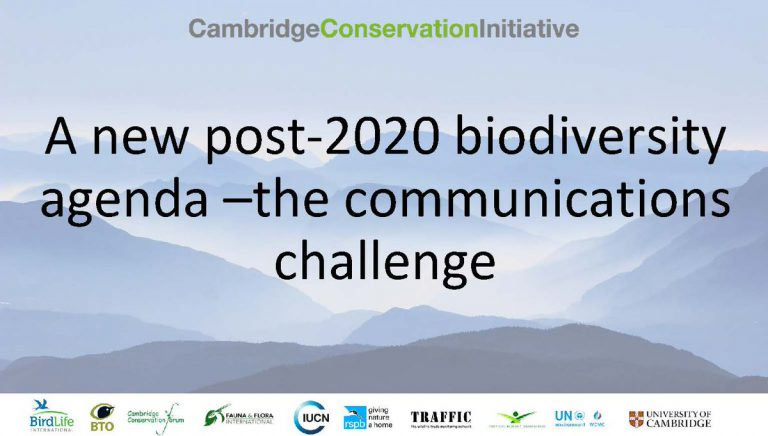
Hello Team Seagrass! My name is Laura and I am an ambassador for Project Seagrass. I completed my professional training year with the conservation charity from 2015-2016. Last week I was privileged to attend the Cambridge Conservation Initiative’s Panel Discussion on Setting a new post-2020 biodiversity agenda. The 2-hour lecture/interactive question and answer session at the University of Cambridge, focused on what scientists and the world needs to do ahead of the 2020 Beijing Biodiversity conference, in which many hope will have the same impact on biodiversity as the Paris agreement has had on climate change. Why is biodiversity important? Species are declining at unprecedented rates, with the loss of some species such as corals, mangroves and seagrass threating the existence of habitats and ecosystems. Biodiversity is often overlooked in comparison to climate change and the growing fight against plastic pollution as you can’t necessarily see the physical effects. However, national governments are starting to recognise its importance, with 17% of the world’s land and 10% of the world’s oceans agreed to be protected by 2020. But is this enough? We heard a call from Dr Christina Pasca-Palmer for “50% by 2050” The first talk was given by Dr Christina Pasca-Palmer, the Executive Secretary of the UN Biodiversity Convention and she strongly disagreed with the current state of protection, suggesting how 50% of the Earth should be conserved, or restored by 2050. We want to be “living in harmony with nature” and the remaining 50% should be transformed to be made more sustainable in terms on consumption and efficiency. Steps to achieve this include business and political engagement and raising the profile of Biodiversity, which will hopefully be implemented at the 2020 Beijing Biodiversity conference. The panel discussed the current problems they face in conserving biodiversity. The second part of the session focused on the panel discussion where experts discussed the current problems they face in conserving biodiversity and how they may overcome these before the 2020 Bejing Biodiversity conference. The panel included Dr Christina Pasca-Palmer, Alice Jay (campaign director for Avaaz), Patricia Zurita (CEO of Birdlife), Prudence Galega (Secretary General in the Ministry of Environment, Protection of Nature and Sustainable Development in Cameroon) and Dr Helen Crowley (Head of Sustainable Sourcing And innovation at Kering group). It was inspiring, not only to see an entirely female panel but to hear their views on what needs to be done. “The world has changed…” according to Sir David Attenborough Finally, Sir David Attenborough gave his closing remarks on the afternoon, saying how the world has changed since his time at the University of Cambridge, with the population tripling in size and having severe consequences on biodiversity. He highlighted how “there is no single solution”, with different communities experiencing different problems. However, with gatherings such as the Panel Discussion and the upcoming 2020 Beijing Biodiversity conference, the world has a “cause for optimism” for the conservation of biodiversity. #OurNatureOurFuture Urgent action is needed to safeguard life on Earth, from iconic endangered species such as the white rhino to our precious seagrass meadows. As Dr Pasca-Palmer said, “with the collective will and determination from all of us it is still possible”. If you are interested in learning more about the panel discussion an online version of the event is available: http://ow.ly/pY5I30jvT2g
2018 – From Wales to the World.
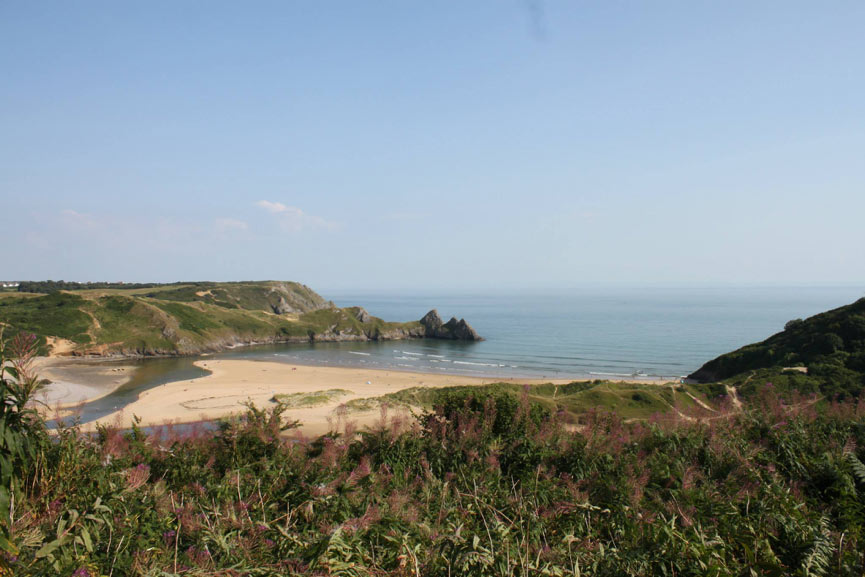
Happy New Year Team Seagrass! I can’t believe it’s 2018 already, and I’m sure that is a sentiment we all share! 2017 was an unbelievable year for all kinds of reasons, yet despite the crazy world we now seem to live in, for a few of us it has been largely a case of business as usual, and for the four of us as Project Seagrass, that consistency has been only been a good thing! Now I’m not going to spend this New Year’s blog recapping on what we got up to in 2017, I’ll just point you to our previous ‘4th Year’ blog post and save the rest for future reminiscing this summer, as we celebrate the BIG ‘5th Year’ as an NGO. We are certainly looking forward to this July! In 2018 we have BIG aspirations, we hope to release a GLOBAL version of our SeagrassSpotter application which will make it possible to record your seagrass sightings anywhere on this precious Blue Planet. Blue Planet. Green Seas. In 2018, we are taking Seagrass Spotter to the world. Since its initial launch in late 2015, we’ve been tinkering with the SeagrassSpotter app, expanding its sphere of use from just our local waters, to now encompass the North Atlantic Ocean, Caribbean Sea and Mediterranean Sea. With help from various end users, we’ve co-created a new version of the application that brings in elements that we, as scientists, had overlooked. Over the last 12 months the real challenge has been in developing the app for the regions around the Coral Triangle with its exceptional levels of biodiversity! In 2018, we are also looking forward to the 13th International Seagrass Biology Workshop in Singapore. The International Seagrass Biology Workshops are official World Seagrass Association events. World Seagrass Association members facilitate the organisation of these biennial meetings and the World Seagrass Association usually provides some financial support where possible. The International Seagrass Biology Workshop series have taken place around the world since Japan in 1993 (when I was just 9 years old!) and have evolved out of recognition of the global focus of seagrass issues. Just from looking at the locations of previous meetings it is clear that these workshops are truly international events! ISBW12: Nant Gwrtheyrn, Wales. 17 – 23 October 2016. ISBW11: Sanya, China. 7 – 10 November 2014. ISBW10: Rio de Janeiro, Brazil. 25 – 30 November 2012. ISBW9: Phuket–Trang, Thailand. 21 – 30 November 2010. ISBW8: Bamfield, Canada. 31 August – 5 September 2008. ISBW7: Zanzibar, Tanzania. 10 – 16 September 2006. ISBW6: Townsville, Australia. 24 September – 1 October 2004. ISBW5: Ensenada, México. 7–11 October 2002. ISBW4: Corsica, France. 25 September – 1 October 2000. ISBW3: Pangasinan, Philippines. 19 – 26 April 1998. ISBW2: Rottnest Island, Australia. 25 – 29 January 1996. ISBW1: Kominato, Japan. 24 – 26 August, 1993 Of course, the other big global event for Team Seagrass in 2018 is The 5th International Marine Conservation Congress in Kuching, Sarawak. Which is being held this summer between the 24th – 29th June. As a gentle reminder, the Call For Abstracts for this OPENS ON THE 5TH JANUARY 2018 (i.e. tomorrow!) so get submitting! Also, just as an FYI, you can keep up to date with the goings on of IMCC5 through their WordPress Blog. We hope we will be able to catch up with many of our colleagues at these events this year and we are always on the lookout for collaborations which will help catalyse positive change for our oceans. We’ve got a few innovative collaborations already pipelined (which I can’t reveal at this point!) but we will do as soon as they are all confirmed! So please get in touch with your ideas at hello@projectseagrass.org Despite all the adversity of the past 12 months I feel genuinely optimistic that this year will be a BIG ONE on the journey to put our “Green Seas” on the map. So keep up that Ocean Optimism, galvanise yourself for the year ahead, and remember what we are fighting for… In the words of David Attenborough; “It’s our green seas, not the blue, that bring life to our oceans.” Happy New Year! RJ
Twenty Sixteen: A year in review…
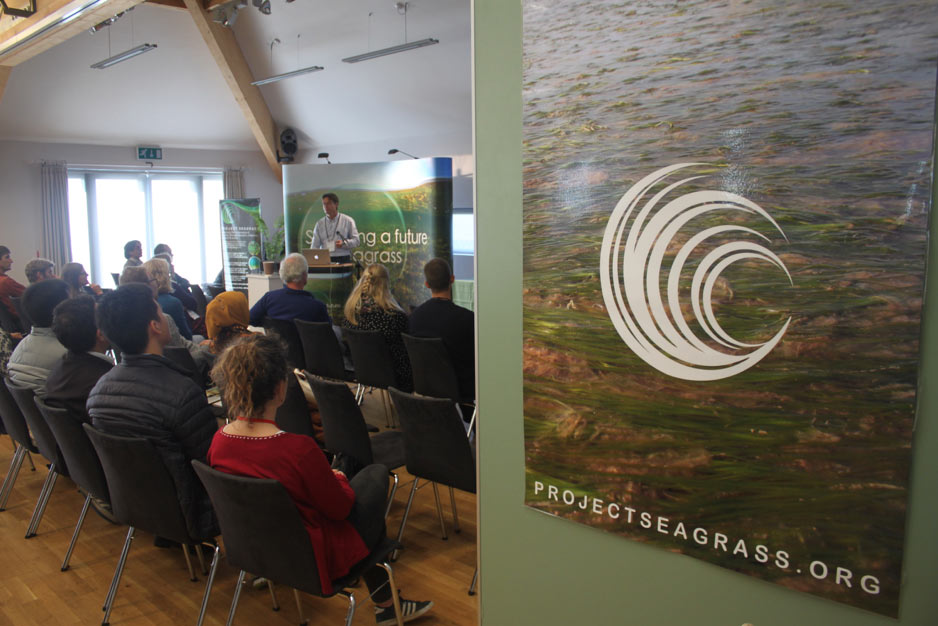
With every year that passes we’re given a unique opportunity to look back and reflect on what we’ve achieved. I’ll be honest, every year since our inception in 2013 we’ve been immensely shocked at just how much we’ve achieved given that we’re on a shoestring budget. 2016 was certainly no different. January We kicked off 2016 with a bang as Richard and myself released our paper discussing the “The perilous state of seagrass in the British Isles”. This was subsequently picked up by the BBC and the Daily Mail amongst others. Additional to this, RJ headed to the BETT show in London to explore the potential use of IT in marine education. Every year, the BETT show sees some of the most innovative education service providers and distributors “take to the stage”, and it opened our eyes to the potential that technology has for marine conservation – a theme that would shape some of our ideas for the year to come. In January Ben and Richards paper made the headlines February Fast forward to February and we were continuing to build on the momentum be built up in January with a hugely successful Seagrass Education & Awareness (SEA) day with Ysgol Morfa Nefyn, complete with seagrass species sand monsters and even a seagrass meadow treasure hunt! We completed the first (albeit cold!) Seagrass-Watch survey of the year, and checked up on our restoration trial that we’d started back in November 2015. Unfortunately, winter storms had battered the site which we’d chosen, and after finding a few seed bags out of the sediment, we weren’t sure of the success of their placement. However, we did observe some signs of germination which gave us hope for the future. Further to this, I was invited to speak live on BBC World News on the topic of marine litter, and we saw a pivotal moment for seagrass research, with seagrass featuring on the cover of Nature. In February Ben was invited to speak live on the BBC. March When I think back to March, it almost seems as though that month alone deserves its own blog post. Back in 2015 we entered the #PeoplesProjects, a competition held by the Big Lottery Fund and ITV to win up to £50,000 of National Lottery money. The Peoples Projects aimed to give organisations the chance to build upon previous projects they had completed with help from the Awards For All funding scheme. We came up with Mission SEA, which aimed to bring the ‘coast to the classroom’ and the ‘classroom to the coast’ to engage Wales’ children with our marine natural heritage. The education scheme we proposed, which would have involved 15,000 children from the counties of Gwynedd, Ceredigion and the Isle of Anglesey, sought to teach children about the resources that our seas provide, whilst inspiring them to become future guardians of our oceans. Although we didn’t win the funding, we finished in the Top 5, and we accompanied the campaign with our hugely successful Project Seagrass Official Launch and the launch of our novel seagrass mapping application, SeagrassSpotter. March was also the month we made our views clear on the EU referendum. “Don’t let the UK become a fish out of water: For the sake of our seas let’s stay in the EU.” Finally Leanne and Richard released a publication that explains in simple terms how to improve the health of the worlds seagrass, at the same time releasing a summary video on YouTube! In March our “Mission Sea” outreach activities were a great success! April While SeagrassSpotter picked up its own pace throughout April, RJ took a lead in expanding the range of Project Seagrass to Scotland, opening a new base of operations, albeit from his living room, in Edinburgh. I spent time in Cambodia, setting up a Cardiff University research project and additional time in Myanmar taking the first detailed look at seagrass communities in the Myeik Archipelago. In April Ben had help on his hunt for seagrass in Myanmar May In May I presented some of my work at MSEAS in France at a conference focussing on understanding marine socio-ecological systems (including the human dimension in Integrated Ecosystem Assessments) and later this month Greg (our regional ambassador for the East of England) conducted some outreach at The Deep in Hull. Richard attended a Zostera Experimental Network gathering in Davis, California. In May Richard attended a Zostera Experimental Network gathering in Davis, California June In June we discovered some long lost seagrass (the first time Zostera marina has been recorded at the location since 1891!) and RJ and Lauren delivered a very successful event at Glasgow Science Festival’s Science Sunday Big Birthday Bash! The stickers, postcards and posters were a huge hit with Glasgow’s young folk so we made sure we had plenty of materials to hand out to Scotland’s next generation of marine biologists! In June the Glasgow Science Festival was a huge success! July July kicked off with a trip down south for Lauren who did some work with the Cornwall IFCA to help understand the juvenile fish value of seagrass in Cornwall. At the same time Laura was working with James Duffy (a PhD student from Exeter University), they began a summer of mapping seagrass using a variety of drones in Wales. Ben and Josie did some outreach with many of the thousands of people who enjoyed Kate Humble’s inaugural Big Day Out festival. Richard led a workshop in Makassar, Indonesia in collaboration with Hasanuddin University and Alex joined us in the field on a Work Experience placement. To round off July, Richard gave a plenary talk about seagrass and food security to The 1st Indian Seagrass Ecology Conference. In July Lauren headed south to work with the Cornish IFCA August In August we heard of our success in applying for charitable status in Scotland and RJ helped to run a workshop at IMCC4 on “Bringing fishermen to the table” using online “Bambuser” technology. A simple concept, yet one that marks a pretty important development considering a lot of commercial fishermen (from both developed and developing countries) who cannot attend conferences like IMCC4 or other such events. In August we were awarded Charitable Status in Scotland: Charity number SC046788 September In September, Evie organised the delivery of some excellent outreach at the British Science Festival and the team began assisting the Convention on Migratory Species (CMS) with the development of a seagrass and dugong e-resource kit.
News, views and press releases…
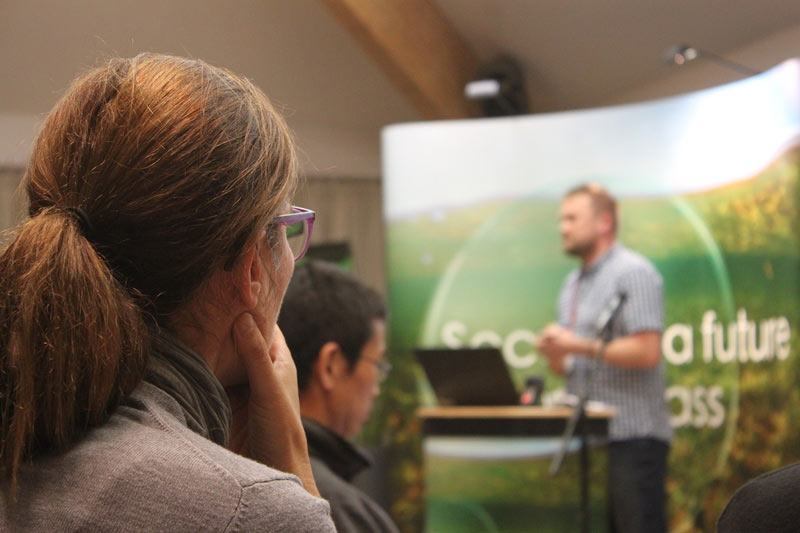
As I sit at my desk looking back at 2016 it occurs to me that one of the biggest challenges we faced as an organisation was “getting the word out” about ISBW12. It’s one thing getting the global seagrass community on board (and transported to a VERY SMALL village in north Wales!), but it’s quite another communicating the importance of such an event to the public… Why should they care? The benefits of bringing the global seagrass community to our home patch have been numerous, and not just linked to what knoweldge and experience we have taken from the experience as a team. Intangiably we have also helped raise the profile of seagrass ecosystems in a country where traditionally they have been little discussed or even acknowledged. Part of the job of communcating this conference was therefore in marketing ISBW12 through social media and traditional media channels. Social media communication is a medium in its own right, but there is still a lot to be said for the value of a coherent press release. Whilst not all of your press releases may make the final cut and get published, it is still worth taking the time and effort to customise your press relases to suit the particular news outlet, be that for a global provider such as the BBC, a national newspaper or more local press. “Know your audience” – rural Wales will have a different appetite for news to urban Scotland. For example, below is a press relase I wrote specifically for The Scotsman newspaper (this one was never used since I was invited to write an opinion piece instead). The key here was to acknowledge the audience. The event was taking place in Wales, so why should anyone in Scotland care? In this case it was important to take the time to personalise the piece to the audience, principally how does it relate to Scotland? For example, are Scottish scientists involved? Or are Scottish scientists attending? Knowing your audience and news outlets writing style is key to getting the word out there. We recieved a lot of news coverage during the conference and a lot of that success comes down to being prepared to tell the same story but in a different way… I want to wish the best of luck to the team oraganising ISBW13! I hope this little reflection provides some insight effective science communication. What I must stress though is that there is no substitute for expertise, and so I want to publically acknowledge the contribution of science communication guru Edd Hind-Ozan in making ISBW12 such a success! Personally i’ve learnt a lot from you… So cheers buddy, it wouldn’t have been the same without ya! RJ Press Release Example: Scottish scientists support global call to protect “lungs of the sea” More than 140 scientists have signed a statement ahead of next week’s International Seagrass Biology Workshop, urging the world’s media to publicise the plight of one of the planet’s most overlooked, yet important natural environments – seagrass meadows. This includes scientists based at Scottish marine conservation charity ‘Project Seagrass’. Seagrass meadows, like those we have in Scotland, are critical habitats for marine life and are a home to many species important to the national fishing industry, such as cod and plaice. “Seagrass meadows are at least as economically and ecologically important as better known tropical rainforests or coral reefs,” said marine scientist Richard Lilley, founding director of conservation charity Project Seagrass and co- ordinator of the Scottish Seagrass Network. “Globally, seagrass meadows create an amazingly productive habitat for a plethora of fish and well-known seafood species like seabreams, lobster and shrimp”. A signatory to the statement, Lilley continued, “Destruction of seagrass meadows leads in turn to the loss of the marine animals they support. Protecting such value into the future is critical.” ‘ECONOMICALLY AND ECOLOGICALLY IMPORTANT’ The statement highlights the global importance of seagrass meadows, which are comprised of underwater flowering plants rather than the more common seaweed. These “powerhouses of the sea create life in otherwise muddy environments”. The statement describes how the ocean prairies are “key fishing grounds”, as well as “one of the most efficient oceanic stores of carbon on earth”, the latter meaning that they play a crucial role in preventing human emissions of carbon dioxide contributing to damaging climate change. The statement, organised by Project Seagrass co-director and president of the World Seagrass Association, Dr Richard Unsworth, calls on all national governments and international policy-makers to “take local, regional and global action to ensure the future survival of seagrass meadows”. The motive for the statement’s release is to bring an end to “the loss of seagrass from human induced impacts such as poor water quality, coastal development, and destructive fishing.” In Scotland, much work is already being undertaken by scientists and conservation charities to prioritise these threatened habitats. This includes the development of a new initiative called ‘Seagrass Spotter’, a ‘citizen science’ project which any member of the public can volunteer to take part in. SeagrassSpotter, downloadable as a smartphone or tablet app (www.seagrassspotter.org), encourages the general public to report sightings of seagrass around the Scottish coast. “So far, Seagrass Spotter has been embraced by a number of groups around the Scottish coast with sightings coming from the Isle of Barra to the Firth of Forth. But, we need to understand more about where our seagrasses are and their health status. By taking photos and answering simple questions about the seagrass we can begin to understand more about the status of this amazing resource.”, explained Lilley. ‘SECURING A FUTURE FOR SEAGRASS’ NERC funded PhD student Maria Potouroglou of Edinburgh Napier University has been quantifying the extent to which Scottish seagrasses are able to absorb and store carbon dioxide in the coastal sediments. “Seagrasses in Scotland have already stored around 20 Megatonnes of carbon dioxide in our coastal sediments, stored carbon that would otherwise have ended up in our atmosphere contributing to climate change”. Keen, however, to emphasise that humans are also the answer to the travails of seagrass, the marine experts raise hope through
Reflecting on ISBW12: “Securing a future for seagrass”
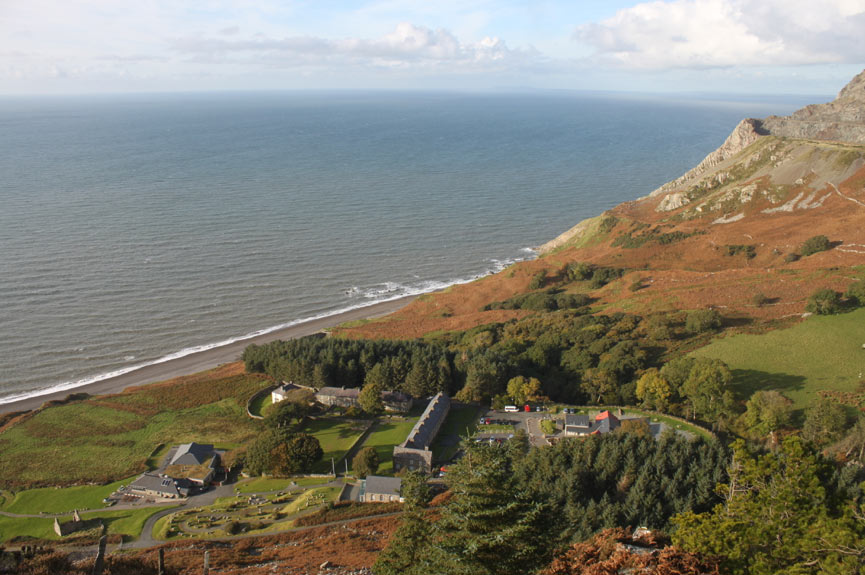
It’s already been one month since the 12th International Seagrass Biology Workshop began at Nant Gwrtheyrn in Wales. This time last month the world’s foremost seagrass scientists were descending on the Llŷn Peninsula and the Project Seagrass team were in the midst of the final preparations for hosting the largest International Seagrass Biology Workshop in recent times. Immediately prior to the conference The World Seagrass Association released a statement that had been endorsed by 122 scientists across 28 countries. The statement described how the international seagrass research and conservation community together with the World Seagrass Association called on all governments and global institutions to take local, regional and global action to ensure the future survival of seagrass meadows. This statement was instrumental in generating media coverage, and the conference was picked up by both local and national media outlets including the BBC. The conference itself kicked off with a healthy dose of #OceanOptimism which set a positive tone for the rest of the week. We learnt how seagrass science is reaching new audiences and how citizen science projects and novel educational tools are bringing seagrass meadows to the general public like never before. “Securing a future for seagrass” – Ocean Optimism was a central theme running thoughout the conference. The presentations and workshops that formed the bulk of the conference program provided numerous occasions to discuss the current key themes in contemporary seagrass science. These themes range from from ‘Blue Carbon’ and ‘Ecosystem Services’ to ‘Genetics’, ‘Physiology’ and ‘Resilience’. Critically, the conference also afforded the opportunity to discuss local management solutions to recreational boating impacts. Here the conference provided an opportunity to harness global seagrass knowledge and expertise in attempting to address a local concern. Despite the travel and costs involved, conferences really are one of the best ways of facilitating the sharing of expert knowledge amongst scientists and other concerned stakeholders. Workshops enabled delegates to draw on scientific and management expertise from across the world. Mid-way through the conference we had organised a ‘fieldwork’ afternoon where delegates would have free time available. This was either an chance for them to take time and space for themselves or to take the opportunity to visit some of the local sights and attractions. The field trips organised by the commitee included a historical trip to Caernarfon Castle, a local guided walk around Nant Gwrtheyrn and what turned out to be an extremely popular Porthdinllaen nature walk and seagrass meadow visit. Never before has our local meadow received so much attention nor have we had so much valuable input as to the state of the Porthdinllaen meadow – so thank you all for that! The seagrass meadow at Porthdinllaen has never received so much attention! After local field trips, one of the favourite elements of any conference I have attended has to be the Poster Session(s). This is an opporunity for scientists to stand by a poster of the research they have done and use it as a tool to communicate their work to other scientists and managers. I enjoy these sessions primarily because you can spend as much time as you want with the researchers and really get to understand the context and methods behind the research being conducted. Personally, I thought the quality of posters presented at ISBW12 were some of the highest I have seen at any conference anywhere and I’m sure we were all impressed with the contributions from our student (and pre-student!) researchers. So well done #TeamSeagrass! So many of the posters were truly excellent! Including this poster from Theodora and Helen Horangic. As the conference week drew to a close the Conference Dinner provided a great opportunity for colleagues to relax and celebrate what had been a fantastic week of seagrass science. It was also the opportunity to inform everyone that the next conference, the 13th International Seagrass Biology Workshop (ISBW13), which will be in Singapore in 2018. Dr Siti Maryam Yaakub SJ was able to share with us that the location of ISBW13 will be in Singapore in 2018. As the sun set on the final night of ISBW12 I felt a strong sense that this conference was surely just a springboard to the greater recognition of seagrass meadows globally. It’s great to see so many scientists sharing their stories in the media and championing the seagrass cause in their local area. One month on it’s up to us to make sure that the “Seagrass Surge” of ISBW12 was not just a flash in the pan, but the start of a genuine global movement to put seagrass meadows alongside other marine ecosystems at the centre of marine discussion. As the sun set on ISBW12 I believe the sun is only really beginning to rise on seagrass science as a whole. A big thank you to everyone who participated in ISBW12. It was a genuine pleasure to host the seagrass community in Wales and we are very much looking forward to seeing you all again in 2 years time… Until then! Keep up the good work! #TeamSeagrass
ISBW12 – A first conference blog!
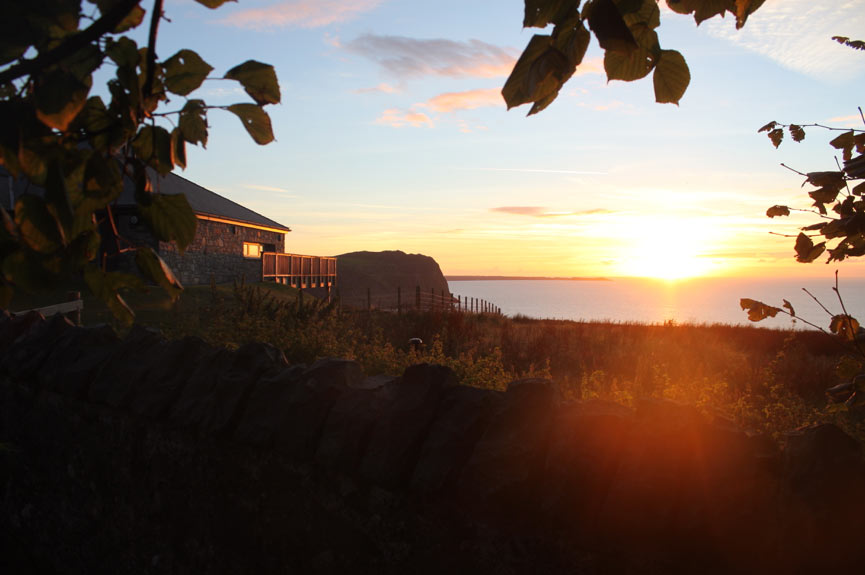
First off, the stereotype of a conference in my head is hushed voices, fancy clothes and everything deadly serious, but throw into the mix that it’s a conference based around seagrass and I was completely at a loss as to what to expect. Having packed for all possibilities (would the seagrass team transform into a posh looking bunch? Or would the usual jeans and an old tee be acceptable?) we headed up to Nant Gwrtheyrn in North Wales. The Nant is a gorgeous former quarrying village looking out past dramatic cliffs to the ocean with a seagrass bed just around the corner- I was definitely spoilt with the location of my first conference, it doesn’t get much better than having only a five-minute walk to the beach to process the constant buzz of activity. It’s probably not the normal conference experience that one of the first things I learnt was that if you sneak off last minute to pretend to be in The Lord of the Rings exploring the cliffs, then put on things that can get muddy- twice I went down, but proudly caught myself before my one pair of semi smart trousers changed colour! The path from Nant Gwrtheyrn conference centre down to the beach. To kick the week off was a plenary by Professor Carlos Duarte (King Abdullah University of Science and Technology) talking optimistically about seagrass meadows and popular culture getting everyone laughing – an easy start; maybe conferences weren’t so big and scary! It did leave one question on a conference newbies mind though, the word ‘plenary’ was not yet in my vocabulary – so any students heading to your first conference, everyone attending the conference goes to these, in other words if you talk at one then you deserve respect, you’re a big name in your field! Professor Carlos Duarte ‘Securing a Future for Seagrass’ in the weeks first plenary. So next up was my first workshop. Again the apprehension was definitely there – I’m an undergrad, what could I have to offer to all these academics? Well most of the time not a lot, but it was a perfect opportunity to question and learn, and once in a blue moon I might stumble across an idea that the top dogs had over looked. As intimidating as a professor with a tonne of published papers is, they tended to be welcoming to all ideas and helpful to gently point out that they tried that method 20 years before and it may not be the strongest approach. Timing and Triggers for seagrass flowering workshop with Nordlund LM, Creed J, Jackson E, & Nakaoka M. Despite some fascinating talks and some hot debates at workshops (seagrass scientists can get heated!) that’s not where I personally learnt the most. Sitting with new people each meal time and relaxing with them after a long day was when I found the most inspiration; it’s the time when people get excited about their work and me being fresh faced to the seagrass world meant they could just enjoy telling their seagrass stories without worrying about nitty gritty details. In those relaxed situations people were happy to chat and answer my drilling of questions. The enthusiasm of Dimosthenis Traganos, a Greek pHD student studying in Berlin, who’s eyes lit up as he was telling me about using satellite imaging to map the seagrass of his home lands and the pride as Oliver Thomas from Heriott-Watt University described the numerous different studies he’d done to complete his masters; these were the times when I found as a conference first-timer that I learnt the most. Dancing to ‘y Moniars.’ a local Welsh band. Helping the organising team I felt as though I was sat nicely on the edge of the eye of a storm- able to see the manic behind the scenes madness, but also able to join the peace of the attendees. It was a week of huge learning curves in all aspects- sharing with two Indonesian ladies meant early starts and spicy tea, that whatever culture you come from there is no end to small talk about the welsh autumnal weather and hopefully I’ve picked up one or two new seagrass facts along the way too. A huge thank you to Project Seagrass for all their hard work in helping to host the twelfth successful International Seagrass Biology Workshop and for giving me the opportunity to tag along and get involved. It was definitely a positive week for securing a future for seagrass. And in case you were wondering, the seagrass team does not magically transform into a group wearing tuxedos and ball dresses with pinkies always out when they enter a conference room, they’re still as chilled as ever.
The 4th International Marine Conservation Congress – Making Marine Science Matter.
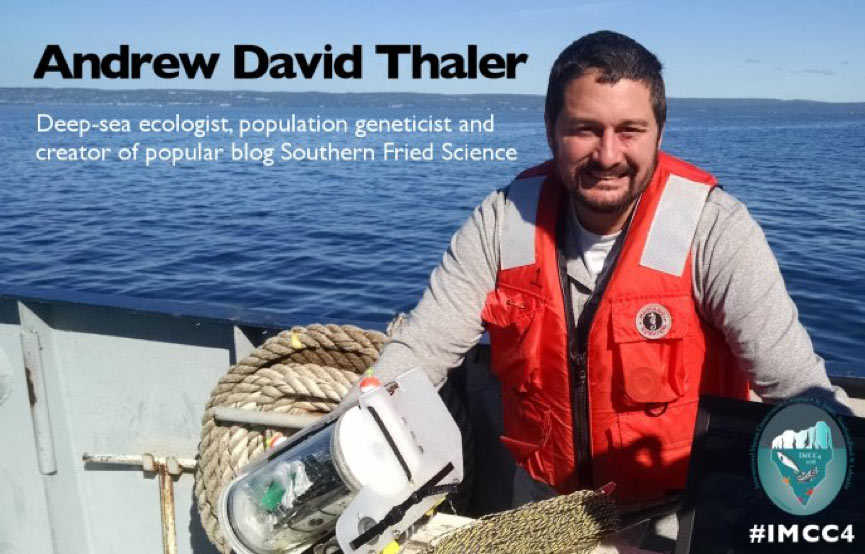
www.conbio.org The International Marine Conservation Congress (IMCC) represents one of the most important international meetings for marine conservation professionals and students. IMCC4 was recently held in St. John’s Newfoundland and Labrador between 30 July – 3 August 2016, building on from the success of Glasgow in 2014 and bringing together conservation professionals and students from across the globe. A key ambition for the conference is to develop new tools and foster collaborations that will further marine conservation science and policy. The overall theme of IMCCs is: “Making Marine Science Matter” For marine conservation to be effective, marine conservation science must genuinely matter to stakeholders, policy makers, and practitioners. To try to accomplish this, the IMCC congresses are generally organized around specific topics of interest for marine conservation, or as topics relevant to specific places. In addition to the regular conference proceedings, IMCC4 also witnessed the inauguration of “#OceansOnline”, a full day of Making Marine Science Matter through online communication and the use of other online resources. Here delegates participated in hands-on training workshops tailored to beginners, and facilitated discussion panels hosted by experts in their fields. Marine Science and Conservation Consultant Andrew Thaler was one of the plenaries – check him out at www.OceanographyforEveryone.com and at @SFriedScientist on Twitter. #OceansOnline is a first of its kind, and from a personal perspective it provided a platform for discussion on how internet tools can help marine scientists and conservation professionals with research, education and outreach. Something which is at the very heart of what we are trying to achieve with Project Seagrass and our SEA Program (Seagrass, Education, Awareness). Sessions about how and why we should talk about success in marine conservation and avoiding the pessimism trap gave us reason to pursue an outlook of #OceanOptimism. As well as ‘making waves inland’, the challenge for ocean literacy in land-locked locations – something that we should really not struggle with in the Britain, and yet we do, as we are never more than 70miles from the coast! #OceansOnline help bring together the online ocean community, facilitating new collaborations and pioneering new technologies. It was through #OceansOnline that I was directly involved, and proud to be. Inspirational colleagues from both academia and the fishing industry (see below) have made the point previously that policies about marine resource use of often decided in the absence of key stakeholders, and in particular with main fishermen feeling voiceless and ignored. This feeling is one that I can directly relate to from my work with the Lipsi Fishermen’s Association in Greece. Here I have worked with a group of fishers heavily reliant on the fisheries provision of their coastal seagrass ecosystems (Posidonia oceanica) and yet as a group they feel powerless to effect change in the regional fisheries management structure. So the idea was to run a workshop on “Bringing fishermen to the table” using online “Bambuser” technology. A simple concept, yet one that marks a pretty important development considering a lot of commercial fishermen (from both developed and developing countries) cannot attend conferences like IMCC4 or other such events. If the fishermen can’t come to the conference then the conference can come to the fishermen! As you can see from the screenshot below the Bambuser platform provides a livestream video feed and a chat function, allowing fishermen, scientists and policy makers to discuss issues around a virtual table. Whilst use of this technology is in its infancy for marine collaboration and communication, with the rapid developments in global internet speeds and connectivity, we all see online tools such as Bambuser as the future in providing essential communication channels between stakeholder groups. If the fishermen can’t come to the conference, then the conference can come to the fishermen! Whilst there may have been teething problems during the session (sound and stream quality in some locations), the general feedback we have received has been overwhelmingly positive. The feedback was overwhelmingly positive about the session. We hope the session provided an example of what can be achieved for our oceans ‘online’, and that we see more use of online technologies to bridge the gap between stakeholders and provide a platform for discussion for marine resource management. Well that’s me for now. Until the next time!

